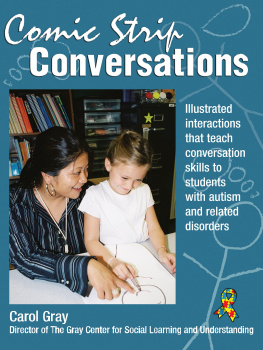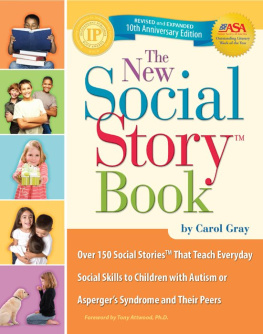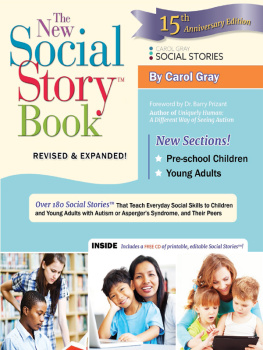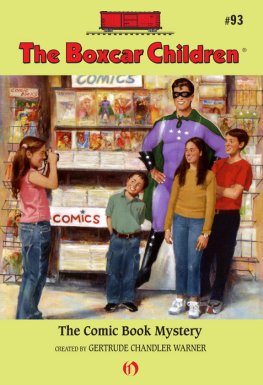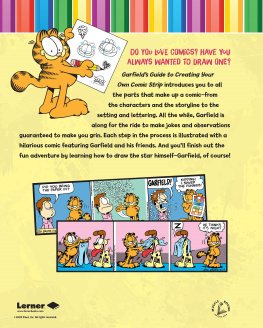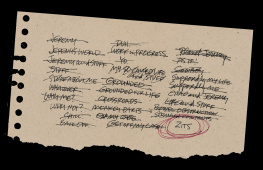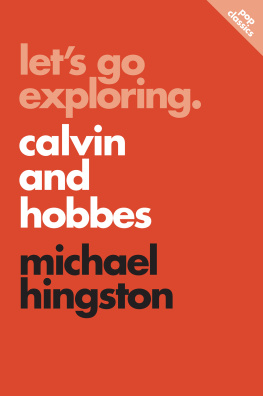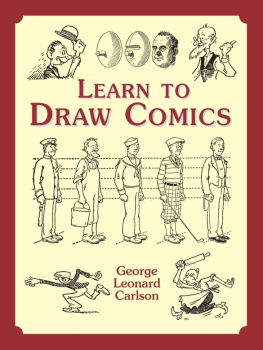Excerpts from the No Fishing Allowed Student Workbook:
For ordering information, please call 1-800-489-0727
Or visit our website at www.FHautism.com
Comic Strip
Conversations
Illustrated interactions that teach conversation skills to students with autism and related disorders
Carol Gray
Director of The Gray Center for
Social Learning and Understanding
COMIC STRIP CONVERSATIONS
All marketing and publishing rights guaranteed to and reserved by
721 W. Abram Street
Arlington, Texas 76013
800-489-0727
817-277-0727
817-277-2270 (fax)
E-mail:
www.FHautism.com
Copyright 1994, Carol Gray. Revised and updated, 1994.
Cover and text design layout: Matt Mitchell, www.mattmitchelldesign.com
All rights reserved.
Printed in the United States of America
No part of this book may be reproduced in any manner whatsoever
without written permission of Future Horizons, Inc. except in the case of brief quotations embodied in reviews.
ISBN 10: 1-885477-22-8
ISBN 13: 978-1-885477-22-4
Acknowledgements
The author wishes to gratefully acknowledge the contributions of
Karen Lind, Sue Jonker, Larkin and Teri Sasseville, and Matthew Graham,
to the development of Comic Strip Conversations
and the completion of this booklet.
In addition, the support given to the development and sharing of instructional
techniques by the administration of
Jenison Public Schools is sincerely appreciated.
To Larkin,
whose drawings reminded me why they call it
the art of conversation,
and
to Matthew,
who taught me that feelings
are as infinite as color,
and that questions are definitely orange.
Confusion
must be sort of like two
or more colors at one time.
Like red and blue.
Or yellow, green, and black.
But mostly orange.
I think confusion should have
orange painted over it.
References
Baron-Gohen, S. (1989). The autistic childs theory of mind; a case of specific developmental delay. Journal of Child Psychology and Psychiatry, 30, 285-98.
Baron-Cohen, S. (1990). Autism: a specific cognitive disorder of mind blindness. International Review of Psychiatry , 2, 79-88.
Baron-Gohen, S., Leslie, A.M. & Frith, U. (1985). Does the autistic child have a theory of mind? Cognition , 21, 37-46.
Buzan, T. (1974). Use both sides of your brain. New York: E.P.Dutton, Inc.
Dawson, G. & Fernald, M. (1987). Perspective-taking ability and its relationship to the social behavior of autistic children. Journal of Autism and Developmental Disorders, 17,487-498.
Grandin, T. (1992). An inside view of autism. In E. Schopler & G. Mesibov (Eds.), High functioning individuals with autism. New York: Plenum Press.
Gray, C. & Garand, J. (1993). Social stories: Improving responses of students with autism with accurate social information. Focus on Autistic Behavior , 8. 1-10.
Hobson, R.P. (1992). Social Behavior in High Level Autism. In E. Schopler & G. Mesibov (Eds.), High functioning individuals with autism. New York: Plenum Press.
Odom, S. & Watts, E. (1991). Reducing teacher prompts in peer-mediated interventions for young children with autism. Journal of Special Education , 25, 26-43.
Twachtman, D. (1992). Sensemaking: Merging the wisdom of pragmatics with literacy-rich new ideas. Presentation at the 1992 Annual Conference of the Autism Society of America. Autism Society of America Conference Proceedings , 1 00-1 01.
Quill, K. (1991 ). Teaching chUdren with autism and pervasive developmental disorders using visual aids. The Autism Institute.
Quill, K. (1992). Enhancing pragmatic development in verbal students with autism: Principles of adult-student interaction. Presentation at the 1992 Annual Conference of the Autism Society of America. Autism Society of America Conference Proceedings, 89-90.
Wycoff, J. (1991). Mindmapping. New York: Berkley Books.
Appendix A:
The Comic Strip Symbols Dictionary
Conversation Symbols Dictionary &
Personal Symbols Dictionary
____________________________s Symbol Dictionary
Conversation Symbols Dictionary
Also from Future Horizons and Carol Gray
Finally, one program teaches students and adults what they can do to prevent bullying!
No Fishing Allowed is a violence prevention program that addresses various elements of bullying behaviors. Carol Gray, author and creator of the groundbreaking New Social Story Book, is a pioneer in social skills education. Judy Williams' extensive counseling experience complements Gray's work. Together they produce an all-inclusive program. Through the use of the Teacher Manual, Student Workbook, and accompanying DVD, this program:
- Emphasizes empowerment strategies for all students who are affected by bully/target relationships
- Provides teachers with information, ideas, and activities to address bullying attempts and other unfriendly social interactions
- Addresses topics such as peer conflict versus bullying attempts, tattling versus reporting, word bullying, friendship bullying, gender-specific bullying, anti-bullying strategies for witnesses, and many more
- Supplies an in-depth annotated bibliography consisting of numerous additional resources
- Allows teachers to organize efforts toward establishing peaceful, friendly, and accepting learning environments for all students.
All children will benefit fromNo Fishing Allowed! The explanations and strategies are based on a thoroughreview and understanding of the research literature, but are also based on an intuitive understanding of how children think and relate to each other. I strongly recommend this program to teachers as an enjoyable and effective strategy to reduce bullying and teasing.
Next page
